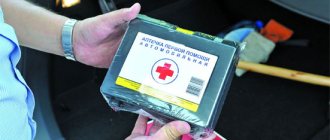Publication date: 03/04/2019 Number of views: 5926
Author: Ermakov Andrey Valerievich Lawyer, partner of the Legal Agency of St. Petersburg Articles written: 20
The situation when an insurance company files a lawsuit against the culprit of an accident in order to recover material damage based on the compensation paid to the injured party is becoming more and more common every year. If previously relatively little-known organizations that had close ties with collection agencies committed similar sins, today you can get a claim for subrogation or recourse from almost any insurance company. Recently, there has been increased activity on the part of the insurance company, which is trying to compensate for its losses under CASCO or OSAGO contracts by filing lawsuits against those responsible for the accident. There is a trend: if the accident occurred in 2015 or 2021 (the statute of limitations is about to expire), and the amount of paid material damage exceeds 100-120 thousand rubles, you can expect a quick summons from the court. There are many explanations for this: the unstable economic situation in the country, a sharply increased number of vehicles, competition in the market, tightening legislation in the field of insurance companies. In order to somehow preserve their assets and not become bankrupt, they are forced to resort to subrogation and recourse claims. What to do if the insurance company sues the person responsible for the accident, what is the difference between recourse and subrogation, is it possible to reduce the amount of payments for a lawsuit and how to protect your property rights? Answers to these and related questions are provided by professional lawyers in the field of insurance law and civil law.
What is subrogation under CASCO?
Subrogation under CASCO is usually understood as circumstances that allow the insurance company to demand a certain amount of compensation from the culprit of the accident.
There are 2 options for subrogation:
- If the amount of compensation is less than 400,000 rubles, the claim will be sent to the liability insurance company of the person responsible for the accident.
- If the amount of compensation exceeds 400,000 rubles, the claim goes to the culprit himself.
How does comprehensive insurance recover money from the person responsible for the accident? This is done as follows:
- The owner of the CASCO policy will not charge the person at fault for the accident. The injured party will receive the necessary payments from the insurance company with which it has a contract.
- Once a client's injury is covered, the insurance company has the right to subrogation. This allows the insurer to recover money from the person who caused the accident.
- If the at-fault driver has a third party insurance policy, the at-fault driver's insurance company will pay out.
The longer a car's lifespan, the cheaper it is. This means that at the time of the accident the car will be worth less than when you bought it. However, this does not change the fact that only new parts will be used to restore the car.
The insurer has the right to subrogation only if the damaged vehicle has a CASCO policy. In case of liability to third parties, the insurance company is obliged to cover all repair costs at its own expense.
However, these are not all the conditions that must be met for subrogation:
- The insurer paid the client the necessary amount to restore the car and fulfilled all other obligations under the contract between the parties.
- The person at fault does not have liability insurance or the amount of damage exceeds the maximum allowable payment.
The court will consider a subrogation case only if no more than three years have passed from the occurrence of the insured event to the filing of the claim. If this period was violated by the insurer, the claim against the person responsible for the accident will be invalid.
The limitation period is established by law. This term is usually understood as the period of time during which a citizen can file a claim in court.
The Civil Code of the Russian Federation spells out all the issues related to subrogation. If we turn to Article 965 of the Civil Code of the Russian Federation, then subrogation can only be applied if there is a property insurance agreement.
If there are no grounds for subrogation or the implementation of this procedure contradicts the norms of Russian legislation, such a mechanism cannot be used. Otherwise, the contract will be officially declared invalid. The car owner will only have to defend his interests in court by filing a lawsuit.
If we turn to practice, most drivers try to overestimate the amount of damage caused to their car as a result of an accident. Thus, they deceive not only their insurance company, but also the person responsible for the accident.
It is possible to avoid subrogation, but the following recommendations must be followed:
- It is prohibited to violate traffic rules while driving.
- The contract with the insurer is concluded for the maximum possible amount.
- If you receive a subrogation claim, it is better not to hesitate. It is necessary to contact a specialist and get advice.
- If you are at fault in a car accident, you should not avoid the investigation process. This is especially true when it comes to assessing property damage.
First of all, it’s worth saying right away that without the help of a professional it will be extremely difficult to solve the problem on your own. This is due to the fact that a person who is not knowledgeable in such matters will not be able to fully understand the claim received, as well as determine how legitimate the claims of the insurance company are.
To protect yourself from subrogation in advance, you must take out third party insurance. This will allow you to pay compensation not to the person who caused the accident, but to his insurer.
The MTPL policy is not cheap, but its owner does not need to worry about having to pay the full subrogation.
There is a case when the claim for subrogation on the part of the insurer cannot be considered justified. The initiator of the accident must insist in court on an investigation to prove the guilt of the other participant in the accident. If this fact is confirmed, then you will not have to pay.
First, it is important to understand what exactly the term “subrogation” means.
Here's an example. A driver with a CASCO policy gets into an accident. The traffic police found him not guilty of the accident. He received a full payment from the insurer under CASCO in the amount of 638,000 rubles.
The insurance company then sought subrogation from the at-fault company because it had a right of claim, and received compensation in the amount of RUB 400,000, the maximum possible amount. They wanted to recover the remaining 238,000 rubles from the culprit of the accident.
How to avoid subrogation for an accident
If you do not want legal proceedings to be initiated against you in order to return the insurance money through subrogation, you need to follow a few simple rules that will help protect your interests if something happens:
- if you are involved in an accident, before law enforcement agencies arrive, find out from other participants in the accident whether they have comprehensive CASCO insurance contracts, and write down their personal data;
- Under no circumstances agree with the imaginary guilt that traffic police officers may attribute to you, and carefully follow what exactly the law enforcement officers indicate in the text of the protocol. If you disagree with their opinion, indicate your point of view and leave a note on the protocol that you do not agree with the conclusions of the traffic police;
- if there are several culprits for the accident, that is, the accident occurred due to the fault of several drivers at once, then be sure to indicate this fact to the traffic police. This fact must be included in the protocol, in which case subrogation will be minimal, and you will not lose significant funds;
- take an active part in the process of determining the amount of damage that you negligently caused to victims of an accident. Insurers and the victim may significantly inflate the total cost of repairs, and this will entail additional expenses on your part;
- In case of examination of the car, be present during it without fail. Your presence will protect you from the machinations of the insurance company and the car owner.
And in general, in no case should you try to establish the truth on your own. Only professionals can do this. Therefore, do not hesitate to involve a qualified lawyer in your defense who can minimize your expenses and mitigate the consequences of the accident. In addition, if invoices are issued to you by way of subrogation, the lawyer will help establish the true cost of the insured event, or find reasons why this mechanism cannot be applied to you.
If you want to have fairly good protection against subrogation, you should also additionally insure your property under DSAGO. This insurance covers damage from an accident that exceeds the amount of compulsory motor liability insurance. Of course, the cost of this type of insurance is quite high, but using it, you can forget about subrogation, since the amount of money that covers your costs will be enough to compensate for the harm to the victim and to return funds to the insurance company.
If a lawsuit has been initiated against you regarding the return of money through the subrogation mechanism, then in no case should it be ignored. In this case, ignoring the problem in the eyes of the court will carry a guilty verdict, and even if subrogation itself is impossible due to the lack of necessary circumstances, the court will take the side of the insurance company if the defendant does not try to protect himself.
Do not hesitate to use all possible mechanisms to solve the problem in court. Demand an examination, insisting that you were not present at the previous one, and therefore are not sure of its correct outcome. Ask the court to order an investigation into the degree of culpability of the other party involved in the accident. It is likely that for some indirect reasons it was he who became the author of the road accident, and any claims against you cannot be satisfied for this reason.
If the emergency occurred while you were performing your official duties, then you will be exempt from subrogation, and all material costs will be transferred to your employer.
Based on all of the above, we can conclude that you can protect yourself from subrogation only if you hire a competent and experienced auto lawyer to defend you, who will carefully study all the circumstances of the case, assess your chances of winning, and develop an effective defense strategy that will allow you to you to fully protect your rights and interests.
When does subrogation arise?
Vehicle owners only learn what subrogation is when they cause an accident. After all, CASCO, and not liability to third parties, is insurance of a car as property.
If the culprit has a compulsory motor liability insurance policy within the limits of the law, it will cover part of the costs. However, do not forget that payments for a mandatory product are strictly limited. It is no secret that there are many expensive cars on the roads, and the amount of damage may exceed the limit of payments under the liability insurance contract.
Little secrets to help you win an argument
Let's start revealing the secrets by telling you what tricks and manipulations insurers use to achieve success. Here, for example, is one of their favorite ways.
This means that they take the case to court when the statute of limitations on subrogation has already expired. They do this on the basis that it was a long time ago; the documents of the person responsible for the accident may not have been preserved, since almost three years have passed.
In addition, people do not like to go to court and most likely will not do so. And this is a mistake. Even if the statute of limitations has expired, you only need to go to court, at least to find out that the period has expired.
There are other options. By contacting a law firm, you can learn a lot of new things. Call us!
And finally, some advice for the future. Protect yourself and sign a voluntary motor insurance contract. Thanks to this, you will avoid unnecessary waste of time, money and nerves.
Statute of limitations
The statute of limitations for subrogation, as in other civil cases, is three years. If for some reason the insurer remembered his right to claim after a longer period of time, he lost this opportunity. In this case, the claim should be answered by pointing out the fact that the agent’s actions have no legal force.
Attention! If you ignore the letter, you may receive a subpoena where you will have to prove that the statute of limitations has expired and the insurer’s claims are not justified. This can be done, but it is easier to respond to the letter before the organization goes to court.
Subrogation in case of an accident: legal basis
In order to have the right to demand compensation from the at-fault driver for the costs incurred to restore the vehicle to its previous condition, the insurer of the at-fault driver must confirm the existence of prerequisites for subrogation in the situation arising as a result of the accident.
To do this, he will need to attach certain documents to the pre-trial or payment claim (depending on which procedure is used to resolve the dispute):
- Confirmation of the fact that the insurer has spent funds in a certain amount, as well as the validity of the expenses:
- Checks, receipts, payment orders, service agreements, etc.;
- photographs and videos taken at the scene of the accident;
- expert opinion establishing the amount of damage and the cost of replacement.
- Confirmation of the guilt of the person to whom the subrogation claim is made:
- accident report;
- resolution in a case of an administrative offense;
- the court's decision.
- Confirmation of the insurer's right to subrogation:
- a copy of the policyholder's statement about the occurrence of an insured event;
- a copy of the vehicle registration certificate and CASCO policy of the injured party.
If the insurer does not provide such documents, the at-fault party may request them independently by submitting a written request. The insurer's refusal to confirm the validity of the claim is grounds for denial of subrogation.
If the culprit does not agree with the amount of the claim, he can contact an independent appraiser, who, based on the information provided, will draw his own conclusions about the true cost of car repairs.
How to Avoid Subrogation Payments
If the person at fault for the road vehicle does not want to receive a claim for reimbursement of the funds spent by the insurer through subrogation, he must adhere to certain rules:
- If a motorist is at fault for an accident, he must find out from other participants in the accident whether they have a CASCO policy. It is necessary to write down their personal data.
- In no case should you agree with imaginary guilt if the traffic police officers who arrived at the scene of the incident try to impute it. For the same reason, it is necessary to carefully monitor what information is entered into the accident report. If a motorist does not agree with the data specified in the documents, he must immediately express his point of view.
- If a traffic accident occurred due to the fault of several drivers, this fact must be announced to the traffic inspectors. Accordingly, this information must be reflected in the accident report. In this case, the motorist will have to pay a minimum amount of subrogation and will avoid large financial costs.
- The car owner must take an active part in determining the amount of damage caused to the injured vehicle as a result of an accident. Insurers and the victim may significantly inflate the cost of repair work, which will lead to increased subrogation costs for the at-fault party.
- During the examination of the car, the person responsible for the accident must be present. This will avoid fraudulent actions on the part of the insurance company or the injured driver.
Pre-trial proceedings
As practice shows, initially insurance companies try to recover their money voluntarily and draw up a pre-trial statement of claim, which is sent to the guilty party.
This is important if no more than 2 years have passed since the accident. Otherwise, the insurer will not waste time and will immediately take the case to court.
If we are talking about a pre-trial statement of claim, then this is a document that prescribes:
- date and time of the incident;
- the identity of the culprit;
- characteristics of the vehicle that caused the damage;
- the amount of damage taking into account depreciation;
- return date;
- A clear explanation of why the insurance company is asking you to transfer funds;
- details of the insurer and name of payment.
In addition to a well-drafted claim, the financial company must attach a statement indicating the amount of payments made to the injured party. The act must be signed and sealed by an authorized employee.
When it comes to paying, seasoned experts advise taking your time. After receiving the letter, you should first check whether the amount indicated corresponds to the actual amount paid. If everything is satisfactory, but the amount of compensation is large, then you should contact the office of the financial company and write an application addressed to the director, in which you ask for an installment plan. In the application you must write:
- return conditions;
- date of crediting funds to the insurer's account;
- determine the income from which the debt will be repaid.
For example, a debt payable is 60,000 rubles: I ask for an installment plan of 6 months. Every month, from the 10th to the 15th of the month, I undertake to deposit an amount of 10,000 rubles. These funds will be paid from the salary I receive during this period.
As practice shows, in most cases, insurers accommodate such clients halfway and are ready to accept payment in equal installments.
Recovery of damages through subrogation under CASCO insurance
First, it is important to understand what exactly the term “subrogation” means.
Here's an example. A driver with a CASCO policy gets into an accident. The traffic police found him not guilty of the accident. He received a full payment from the insurer under CASCO in the amount of 638,000 rubles.
The insurance company then sought subrogation from the at-fault company because it had a right of claim, and received compensation in the amount of RUB 400,000, the maximum possible amount. They wanted to recover the remaining 238,000 rubles from the culprit of the accident.
Limitation period for CASCO insurance under subrogation procedure
The term “subrogation” is enshrined in Article 965 of the Civil Code of the Russian Federation. It represents the right of the insurance company to demand compensation from the culprit for part of the costs incurred if compensation for damage was made under the CASCO policy to the injured party. You can go to court within 3 years after registering an accident . Insurers usually monitor the deadline carefully and file the claim on time.
If subrogation claims are made, you should not hush up the situation. If the driver fails to appear at the hearing, the issue may be resolved in favor of the plaintiff even if the statute of limitations has been violated. The court will cooperate if the driver independently reports that the period for applying and starting the process of considering the case has already expired.
Usually, with subrogation under CASCO, an attempt is made to resolve the issue out of court. The insurance company makes a claim to the culprit and demands to provide the required amount. Typically, a request for compensation is made when at least 2 years have passed since the accident and all the details of the incident have been erased from the memory of the culprit.
When discussing the problem of granting subrogation, you need to find out how much the amount indicated in the claim reflects the real difference between the costs incurred by the insurance company and the compensation received. If it corresponds to the real one, you can try to negotiate an installment plan. Usually the insurer will accommodate you halfway.
How to avoid subrogation payments
How to avoid subrogation under a comprehensive insurance policy and how to avoid payments?
In fact, there are several options, but, as a rule, the essence comes down to one.
You need to make sure that the amount paid under the MTPL agreement is sufficient to cover the insured event. This is not an easy task, but our professionals cope with it in many cases.
Actions to correct the situation should be aimed at reducing the total amount of compensation for damages in an accident. Is it possible to reduce the amount?
Let's briefly list the possible options:
- Appealing the decision contained in the conclusion of the traffic police. The idea is to arrive at mutual blame or shift the blame to the other party involved in the accident.
- Challenging the conclusion about the cost of repairing a damaged car.
At this stage, it should be said that the conclusion of independent experts often leads to different conclusions than those reached by traffic police officers or insurers. So there is a chance.
In what cases does the person responsible for the accident compensate for the damage themselves?
Federal Law No. 40-FZ “On civil liability insurance of vehicle owners” dated April 25, 2002 provides that compensation for losses incurred as a result of a road traffic accident is paid by the insurer responsible for the incident. The same law gives insurance companies the right to bring a recourse claim against the person who caused the accident and because of which the insurer suffered material damage. However, a recourse claim can be made only in certain cases, directly specified in Article 14 of the Law “On Compulsory Motor Liability Insurance”:
- the culprit of the accident intentionally caused harm to the life and health of the victim;
- the person who caused the accident was under the influence of alcohol or drugs at the time of the collision;
- the person responsible for the accident did not have the right to drive a car (driving without a license);
- the driver at fault fled the scene;
- the culprit is not insured by third parties for this vehicle (or the accident occurred during a period not covered by the third party insurance policy);
- the accident report form was not sent to the insurer within 5 working days after the accident;
- within 15 days after the accident, if this is not recorded in the traffic police documents, the driver repaired the car, sold it for scrap or refused to provide it to the insurance company for inspection;
- the diagnostic card was no longer valid at the time of the accident (only for vehicles intended for the transport of passengers and dangerous goods);
- The person at fault for the accident provided deliberately false information when applying for an electronic MTPL policy, which led to a reduction in the insurance premium.
In essence, a recourse claim is the recovery by an insurance company of losses arising as a result of an insured event from its own client, if this client has violated the requirements of the Road Code or the Code of Administrative Offenses of the Russian Federation, and also neglected the conditions stipulated by the MTPL (negligent liability) insurance contract.
What to do if you have a subrogation claim
If the owner of the vehicle responsible for the accident has received a claim for the collection of funds through subrogation, do not panic and try to avoid payment.
If the claim has justified reasons and does not contradict the law, the driver will not have the opportunity to avoid paying the costs incurred by the insurer.
However, until the legality and validity of subrogation is proven, the car owner should adhere to two rules:
- The complaint cannot be ignored. In this case, the judge will decide that the owner of the vehicle is truly guilty, and subrogation will automatically be recognized as justified.
- In no case should you immediately accept all the claims of the insurance company. It is likely that the circumstances of the accident do not allow the insurer to immediately issue an invoice for all costs incurred.
As a rule, the claim is a paper in which the owner of the vehicle is informed that, since he is found to be at fault for the accident, he must reimburse all expenses incurred by the insurer to pay compensation to the victim for material damage caused as a result of the road accident.
How is damage recovered during subrogation?
The insurance company that has paid compensation to the victim under the CASCO agreement, in accordance with Article 965 of the Civil Code of the Russian Federation, acquires the right to claim the paid insurance amount from the person through whose fault the accident occurred, that is, the right of subrogation.
In practice, the collection of compensation by way of subrogation from the culprit of an accident is carried out by the insurance company in accordance with the principles of the share procedure set out in paragraph 2.
CIVIL PROCEDURE CODE OF THE RF. Before filing a claim, the insurer sends the plaintiff a request for voluntary reimbursement of the amount of insurance compensation paid.
The claim should state the reasons for the claims made by the insurance company and indicate the deadline for their fulfillment.
If the at-fault party does not satisfy the demands of the claim, after some time a claim for subrogation arises.
In accordance with Article 56 of the Civil Procedure Code of the Russian Federation, the plaintiff-insurer must prove the basis of his claims against the defendant-accident.
Otherwise, the claim may be denied.
A claim for damages through subrogation must contain evidence confirming the following:
- The fact of concluding an insurance contract and its conditions.
The damage notice must be accompanied by a CASCO insurance agreement (insurance policy) valid at the time of the accident, and the insurance rules.
- The fact of the occurrence of an insured event under an insurance contract.
An insured event is the occurrence of a traffic accident, which is confirmed by materials prepared by an employee of the road safety inspection in accordance with the requirements of the law.
- The amount of damage caused to the insured vehicle.
This circumstance will be confirmed by a vehicle examination (assessment) protocol, and in the case of receiving insurance compensation in the form of vehicle repairs - by an estimate of the costs of repairing the damaged vehicle, and acts of acceptance of the work results.
- The fact of actual payment of insurance compensation and its amount.
Proof of this will be payment documents confirming the transfer of money to the policyholder or the company that repaired the damaged car;
- The guilt of the defendant and the existence of a cause-and-effect relationship between the damage and the unlawful behavior of the offender.
The totality of these circumstances is confirmed by decisions of competent officials of state bodies or the court that have entered into legal force to bring the participant in an accident to administrative or criminal liability.
It is important to note that all of the above circumstances must be confirmed by evidence when filing a claim in pre-trial order.
Is there a statute of limitations?
A CASCO claim filed after the expiration of the statute of limitations must not exceed 36 months.
This period begins from the moment of documentary confirmation of the insured event. It does not expire even if your insurance has expired.
During this time, you should retain your insurance policy, contract, and any documentation of the covered event, as this can significantly reduce your recourse for damages.
If the injured party's insurer files a claim three years after the accident, you will not be able to legally recover from the claim. All you need to do is present documents and confirm that the statute of limitations for recourse claims has expired.
It is important that all drivers know their responsibilities and rights so that they can protect themselves in unexpected situations and even avoid getting into them.
To do this, you need to familiarize yourself with the current Russian legislation, carefully study all the conditions and requirements of insurers and learn about compensation mechanisms.
This will help protect yourself from unexpected expenses on particularly large scales. But first of all, it is necessary not to ignore the rule for drivers and not to violate traffic rules, so as not to cause unpleasant incidents.
Principles for applying the limitation period to CASCO insurance
The term we are considering is mandatory, which means the parties cannot change it by agreement. As a general rule, this judicial period is also continuous . In certain situations, the law provides for the possibility of suspending the limitation period.
For example, if at this time events occurred that prevented the citizen from filing a lawsuit. These include personal circumstances (serious illness of the plaintiff, military service, business trip abroad) or other officially confirmed force majeure circumstances. The court will require documentary evidence of these facts.
After the end of such circumstances, the limitation period continues.
If the limitation period, taking into account stops or interruptions, has expired, then the court has the right to refuse to consider the claim against the insurer.
Missing the statute of limitations does not always mean an unconditional refusal to accept an application . The court may renew the missed deadline if it considers the reasons for the delay convincing. The legislation does not provide a specific list of such reasons. The applicant’s ignorance of the existence of a time frame for filing a lawsuit will certainly not be considered a sufficient basis for extending the deadline. The end of the limitation period for the main claim entails its end for all additional claims.
To restore the statute of limitations, you must submit a separate application indicating the reasons for missing it. If the court granted the request and restored the deadline, then the next stage is a statement of claim to recover compensation from the insurer. It is important that the claims are drawn up correctly, in compliance with a certain form and contain a substantiation of the stated facts. To do this, you should contact a professional lawyer .
Differences between recourse and subrogation in the world of auto insurance
When it comes to car insurance, there are no distinctive features in these categories. In general, the main features of recourse and subrogation in relation to compulsory motor liability insurance and comprehensive insurance can be reduced to the following theses:
- transfer of the victim's right to receive compensation to the insurer only after the occurrence of an insured event provided for in the insurance contract;
- An agreement for the assignment of the right to claim compensation for damage caused by the perpetrator of a road traffic accident is considered concluded if there are clear grounds for determining the specific right in respect of which the assignment will occur. And even if the scope of the right cannot be determined or for some reason is not determined, the right can be assigned to a third party, namely the insurer;
- If the insurance company compensates the victim for damage in excess of the amount of insurance compensation under compulsory motor liability insurance, the insurer has the opportunity to demand compensation for damage from both the insurer of the guilty party and the guilty party itself.
In addition, it is worth mentioning a category such as private debt. This occurs when the debtor obligated to pay damages does not participate in the process of repaying the obligations. The new organization enters into the relationship by paying the obligations of the original organization. Thus, in such a relationship, the new debtor cannot apply either recourse or subrogation to the original debtor even after the obligations have been satisfied. This was approved by the Presidium of the Supreme Court.
What is the insurance period?
Legal assistance in case of an accident
Insurance claim: rules for filing
The insurance company filed a lawsuit against the person responsible for the accident, what should I do?
As for the claim periods under CASCO, for claims that arise from a property insurance contract, a period of two years is established.
And if there are facts of harm to the health, life or property of other citizens, then in this case the statute of limitations is 3 years.
A limitation period of 2 years for legal relations that arise under a CASCO agreement is considered a special limitation period. This rule is established in Art. 966 of the Civil Code of the Russian Federation.
What does this period mean for the insured person and how to determine its beginning? The fact is that an analysis of judicial practice shows that the courts do not have a unified approach to determining the moment when the limitation period for claims under CASCO is calculated.
Some believe that the statute of limitations must be calculated from the moment the insured event occurs. When explaining this approach, the courts indicate that the insurer is obliged to compensate losses to the client, therefore, the right to claim insurance payments from the insured person arises at the time the insured event occurs.
Other courts take a different position, believing that the statute of limitations should be counted from the moment when the insurance company did not pay the insurance or these payments were not made in full. After all, it is after receiving a refusal of insurance compensation that the rights of the insurer will be violated, and he has the right to go to court.
Procedure for compensation of damages by way of subrogation
The Civil Code of the Russian Federation provides for compensation for damage through subrogation. The insurance company that provided insurance coverage to the victim on the basis of the CASCO agreement, in accordance with Article 965 of the Civil Code of the Russian Federation, has the right to demand the paid insurance amount from the person at fault for the accident, i.e. right of subrogation.
In practice, subrogation of the claim of the plaintiff, through whose fault the accident occurred, is carried out by the insurance company in accordance with the rules of the claims procedure introduced by § 2, Part.
There are agreements that allow the exercise of subrogation rights:
- The exact availability of a valid insurance contract, including CASCO.
- The amount of compensation cannot be higher than that which was paid to the injured party.
- At the same time, the amount that is compensated at the beginning of the loss to the victim must be the exact reason. If damaged parts of the old car were replaced after an accident, compensation is also calculated based on the damaged parts.
The procedure for offsetting losses under the right of subrogation is as follows:
- After the occurrence of an insured event, the injured party will seek compensation in accordance with the terms of the contract.
- After the insurance company has paid the claim, the insurer files a claim asking them to pay themselves up to the amount of the claim.
- Then everything is done through the court, the money is transferred to the offender who had these problems, there was not even any property to seize.
Cases and procedure for applying subrogation
Subrogation is most often used by CASCO insurance companies when damage to the car is caused by the fault of the policyholder. There are also some exceptions for which subrogation cannot be applied:
- When the person who caused damage to the property of the insured is a relative of the insured or pays benefits to him. This means that the insurance organization does not have the right to demand compensation for paid damages from the culprit - a relative of the victim.
- If the victim, who insured his car, for example, with CASCO, is the only participant in the accident, the insurer pays compensation based on the contract and does not have the right to demand subrogation expenses.
- But as soon as the insurer manages to prove the fact of intentional harm, the conditions will be canceled. This means that the insurer may also have a right to subrogation.
Law on limitation of actions under CASCO
Clarification of the limitation period for CASCO insurance is provided by separate provisions of the Civil Code of the Russian Federation. The main articles establishing the rules of procedure include the following:
| Article of the Civil Code of the Russian Federation | Characteristic |
| 195. | Defines the concept of the limitation period for CASCO insurance. |
| 196—197. | Establish nuances for the implementation of general and special deadlines. |
| 200. | Specifies the start date for calculating the limitation period for CASCO insurance. |
| 202. | There are situations when the calculation of the deadline can be suspended. |
| 203. | Fixes the nuances when the calculation of the period under CASCO may be suspended. |
| 205—206. | Determine the peculiarities of the sequence of actions of the interested party in cases where the statute of limitations has expired. |
Also, for a complete picture, it is worth considering Art. 966 of the Civil Code of the Russian Federation, which spells out the subtleties of clarifying the appropriate time period for property insurance requirements.










